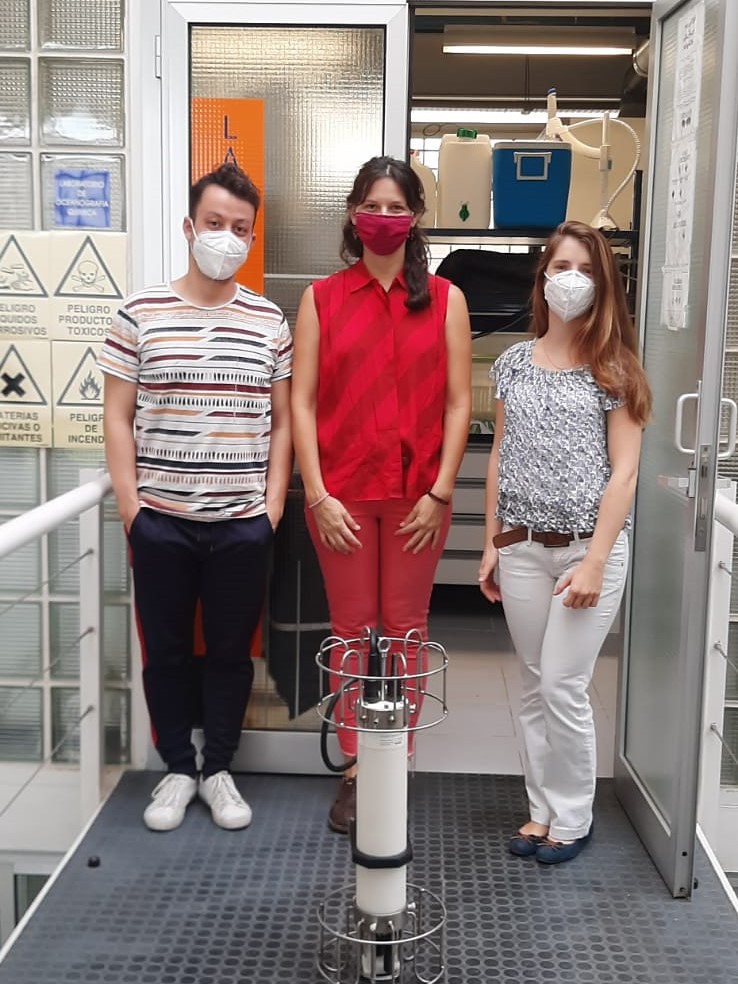This year, despite the situation arising from the pandemia of COVID-19, the VII International Symposium of Marine Sciences (ISMS 2020), which takes place every two years, is maintained and reinvented, celebrating an on online mode. For the first time, the Workshop on Marine Litter (BAMAR2020) is held, which aims to answer the existing concern on this issue in the scientific field and other sectors of society and management. In addition to this, the event also brought together the Iberian Seminary of Marine Chemistry (SIQUIMAR 2020) and the Workshop on Marine Reserves (REMAR 2020)
From the research group Technologies, Management and Environmental Biogeochemistry (TGBA), we have participated with four presentations presented by three of our young researchers. Find out below!
Ballast water discharge profile at the Port of La Luz
Within the different activities of the @Blueports Project, the researcher Perrine Nantois studied the ballast water discharge profile of the port of Las Palmas de Gran Canaria. The profile has been carried out considering the different ports of origin and the type of ships docking the port during the years 2018 and 2019. This work will allow, among others:
- Estimate in advance the amount of ballast water that would need to be treated (e.g. for sizing treatment plants)
- Determine vessels with the greatest potential of introduction of non-indigenous species (volume and frequency), facilitating the orientation of environmental management measures
The preliminary results of the work show that the ships with the highest volume potentially unloaded have as their origin ports on the Northwest African coast.
Persistent microplastics and organic pollutants in cetaceans
The PhD student Tania Montoto had the opportunity to advance, at the BAMAR Workshop, some results of her research on the presence and characterization of microplastics in the stomach content of stranded cetaceans in Macaronesia, as well as the presence and concentration of some persistent organic pollutants (such as phthalates, bisphenols and pesticides) in their muscle tissue.
Although it is worth mentioning that fibers were identified in all the samples analyzed, only four animals presented plastic fragments inside, these being, and in addition, smaller than 5mm. On the other hand, all the individuals, without exception, presented levels of phthalates, bisphenols and pesticides in tissue.
This work has been developed thanks to the collaboration of institutions such as the Museu da Baleia, or the University of Animal Health Institute, through the MARCET Project (MAC/1b/149).
Characterizing the chemistry of an anthropogenic station
The participation of the TGBA group in the SIQUIMAR event was made through a poster presentation, where Abisai Melián presented some preliminary results of the work that has been carried out within the framework of the ECOMARPORT project (MAC/1.1.B/081), whose objective is the assessment of air quality in the port of Las Palmas de Gran Canaria by identifying the concentrations and sources of atmospheric particles in suspension.
This communication presented a comparison between the total metal content and soluble in particulate sprays at two sampling stations, one of anthropogenic influence located in the Port of Las Palmas, and another of rural type, located in Pico de la Gorra, where the TGBA research group has been sampling since the end of 1996.
The results show differences between the two seasons, with a greater presence of typically anthropogenic elements in the Port that control the solubility of metals. The presence of these elements, however, does not exceed the limit concentrations in accordance with RD102/2011.
Motivations and concerns of young researchers
Tania Montoto also presented an oral communication on behalf of OYSTER, a working group of young marine researchers from EuroMarine. In it, were presented the results of a survey conducted in 2018 on the most common motivations and concerns among the profiles of young predoctoral researchers, master’s students, contracted in project, etc., of different institutions and nationalities were released.
Among the upcoming activities of OYSTER, it is worth highlighting the participation in the EuroScience Open Forum (ESOF), the launch of a new survey – this time on family reconciliation and the advantages and disadvantages of mobility during this early scientific stage – as well as the start of a mentoring program, among other actions. To stay up-to-date with news, we recommend you their Twitter account: @EM_OYSTER





